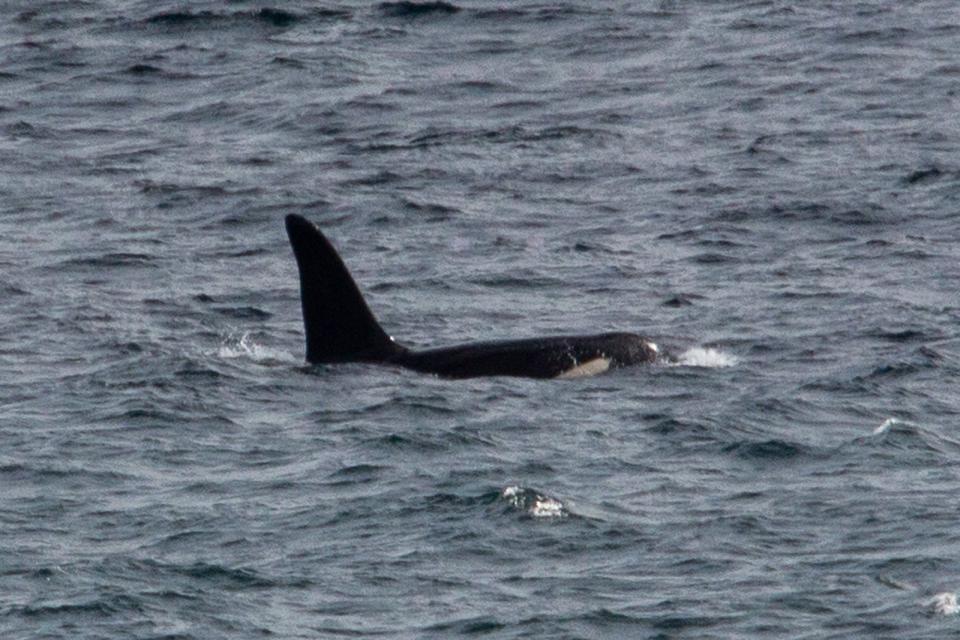Two killer whales are spotted off the coast of Cornwall

The pair have been named John Coe and Aquarius
Two killer whales have been spotted off the Cornish coast in what experts believe is the first sighting of them travelling this far south.
They were spotted on Wednesday by members of Cornwall Wildlife Trust off the west coast, near the Minack Theatre.
The pair, named John Coe and Aquarius, were identified by the shape and notches of their dorsal fins and patches of colouration near their eyes and on their backs.
Abby Crosby, marine conservation officer at Cornwall Wildlife Trust said: “Photographs validated the record and identified these rare and beautiful individuals as John Coe and Aquarius.
“This is the first official orca record in our databases with associated photos in over a decade, and further proof of the value of our coastal seas in supporting these magnificent creatures.”

The two killer whales form part of the West Coast Community, a specialised pod of eight individuals that can be distinguished from other groups of orcas by their unusual sloping eye patch and larger size.
Although they are regularly monitored, some have not been seen in recent years and there have been no calves observed since monitoring began in the 1990s.
According to the Hebridean Whale and Dolphin Trust, the pod faces the risk of extinction as a direct result of human activities.
This includes exposure to high levels of now-banned PCB chemicals which have caused poor health and infertility within the pod.
Ms Crosby added: “This pod, and the issues it faces with infertility and future extinction, should be a huge wake-up call to the public that we must protect these creatures better in our waters.”
Orcas are the largest member of the dolphin family.
Watch: Swimmer greeted by curious killer whales in rare encounter
Read More
National Gallery painting written off as copy revealed as real thing
Nearly 25% of admissions of youngsters to psychiatric hospitals ‘involuntary’
Small solar flares helping shed light on the Sun’s mysterious heating process

 Yahoo Finance
Yahoo Finance 